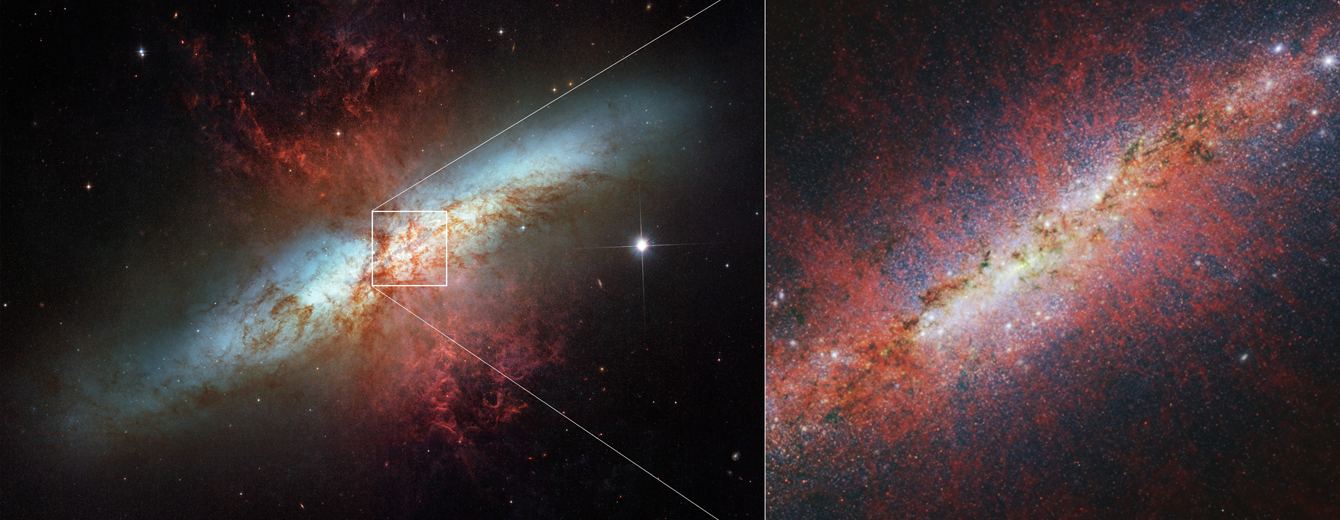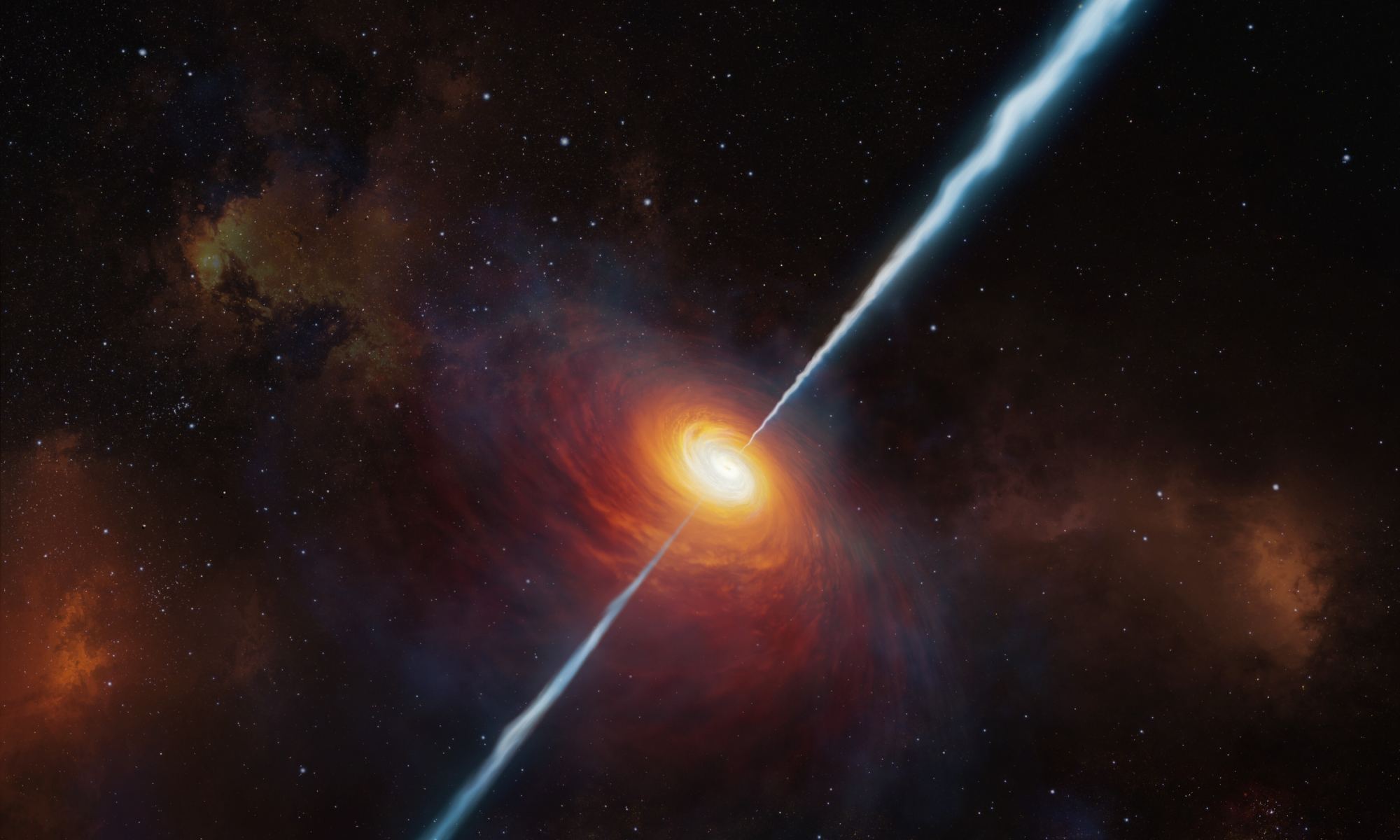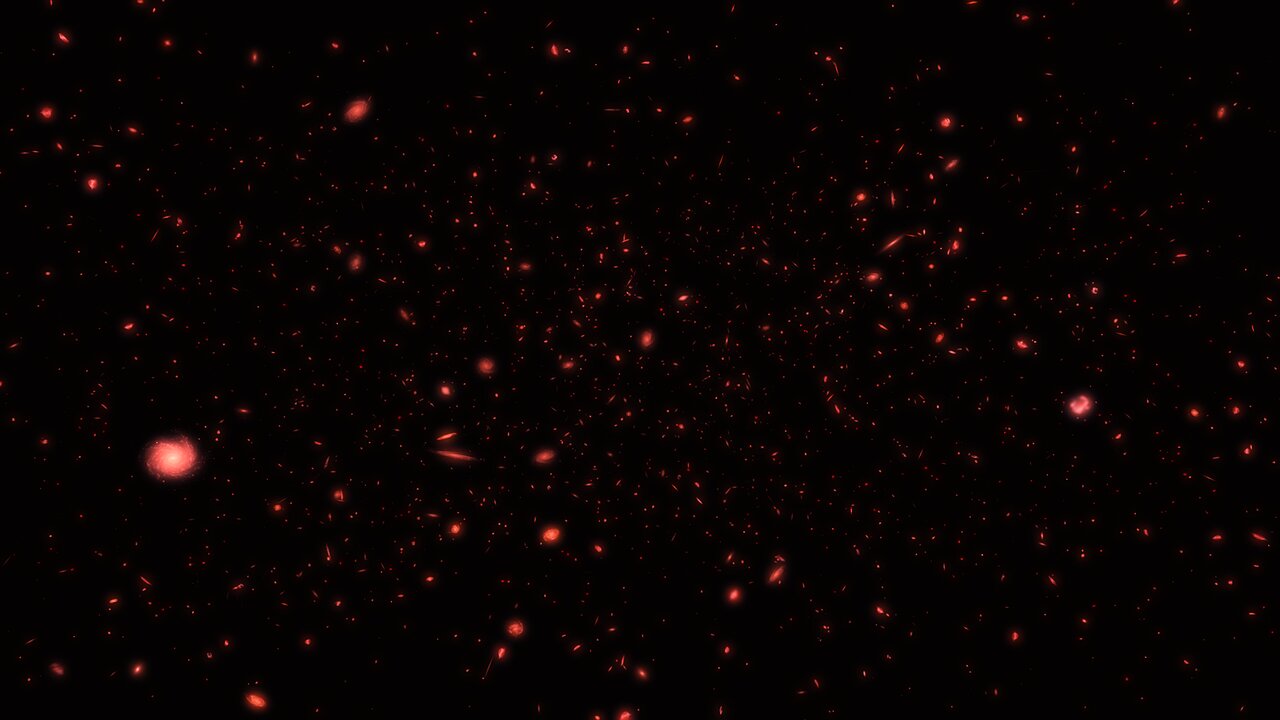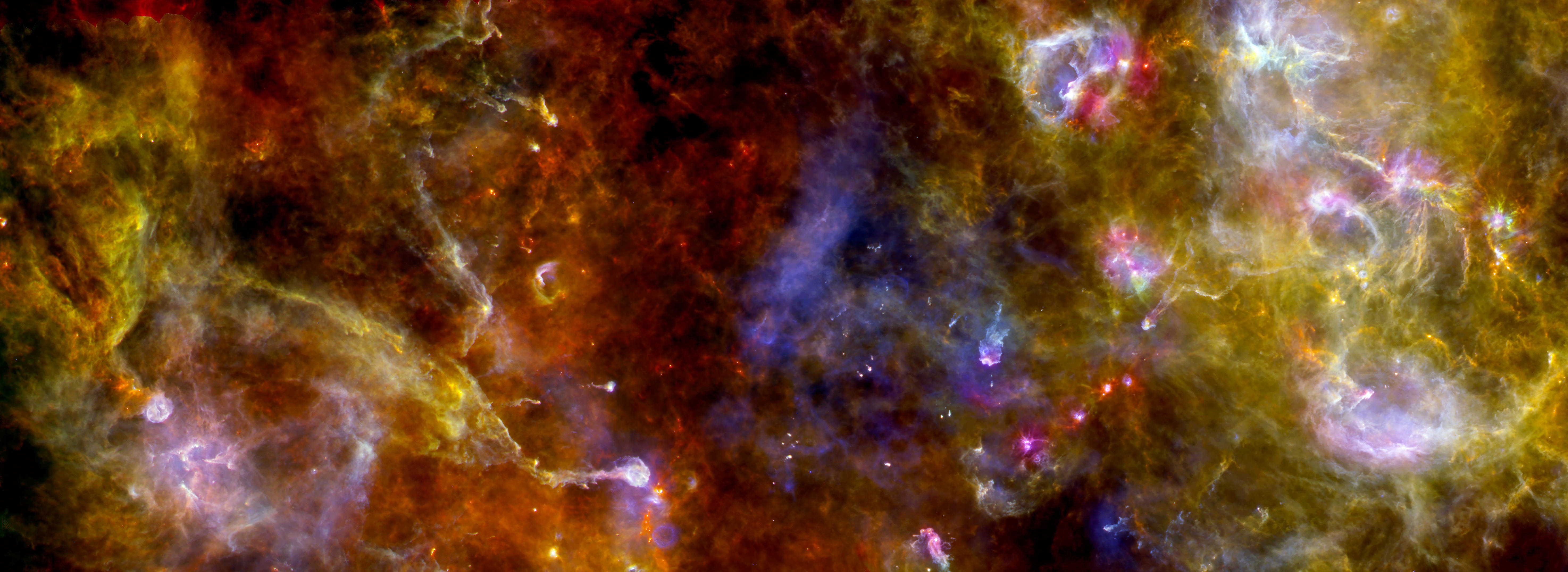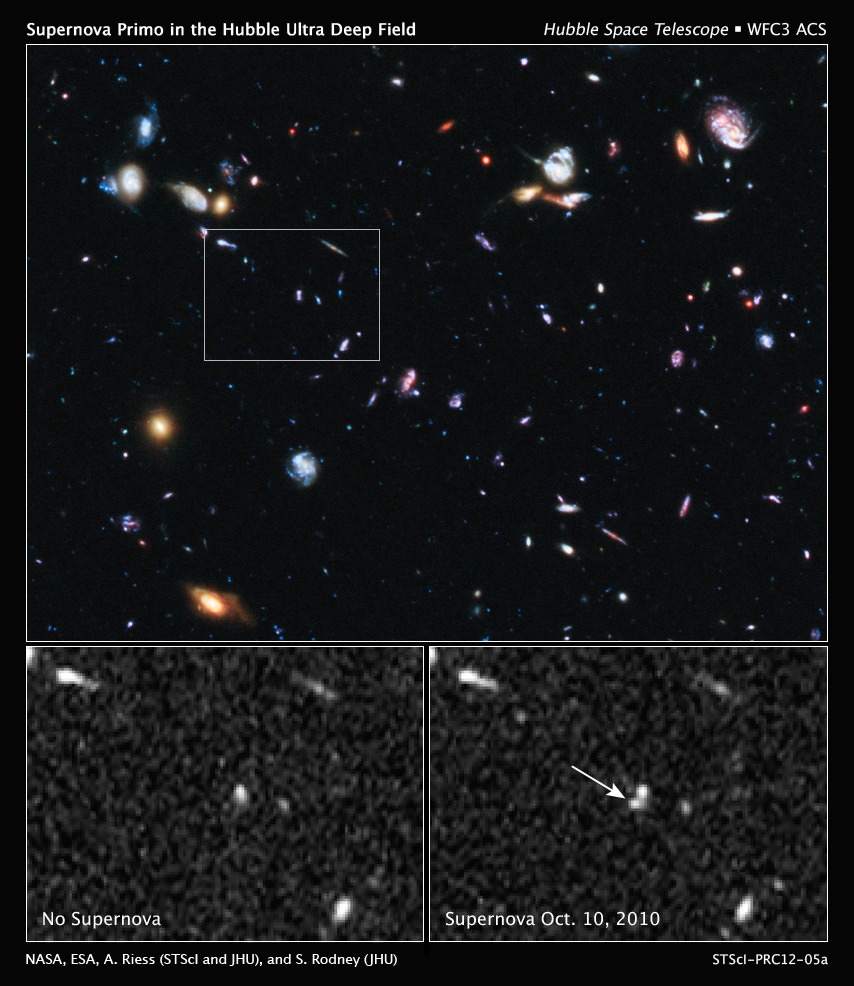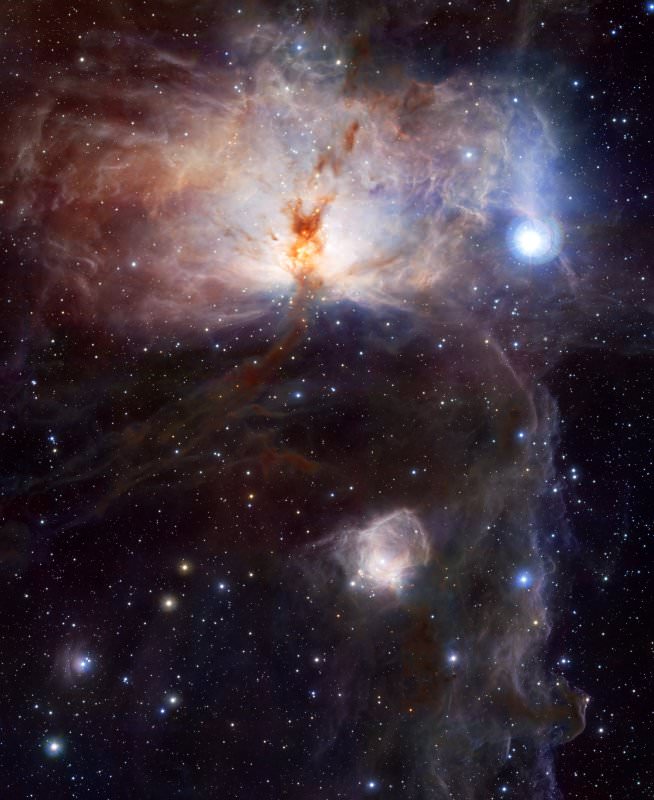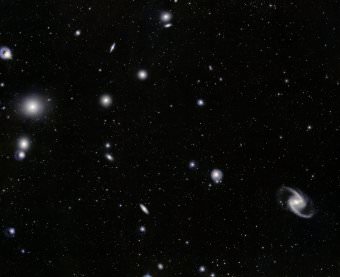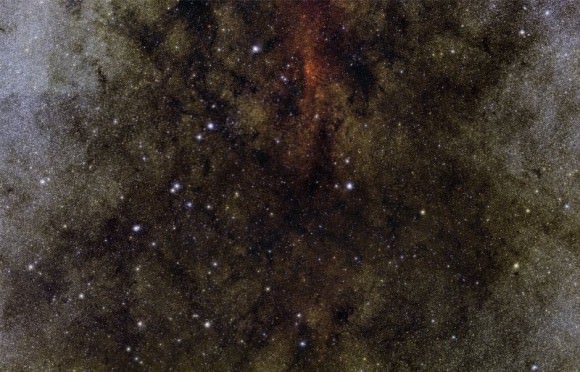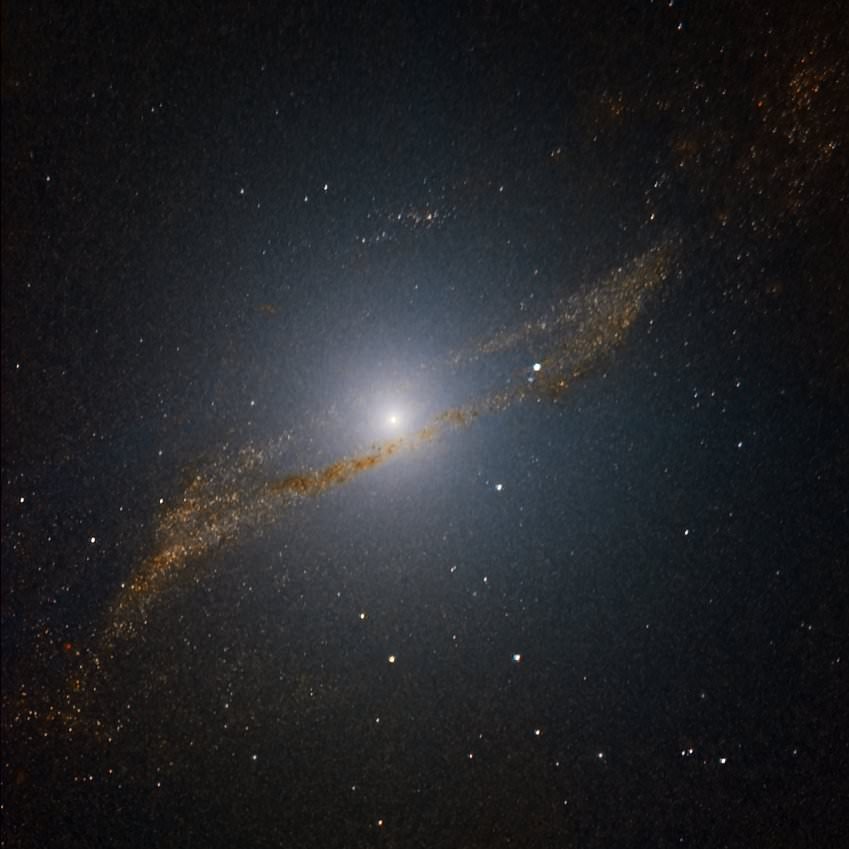Centaurus A (NGC 5128) is one of the most studied objects in the Southern sky, because it is the giant elliptical galaxy with the closest proximity to our own Milky Way. It lies 11 million light years away from the Milky Way, and is believe to have merged with another gaseous galaxy about 200 to 700 million years ago. The result of this galactic mashup: the birth of hundreds of thousands of stars in a kiloparsec-spanning ring near the core.
This is the first time that the inner structure of the galaxy has been resolved in such detail. Using the SOFI large field Infra-Red (1-2.5 micron) spectro-imager at the ESO New Technology Telescope, a research team led by Jouni Kainulainen of the University of Helsinki and Max Planck Institute for Astronomy was able to image a large ring of stars that have formed – and are still continuing to form – near the center of the galaxy. The brightest sources in the ring are red supergiants, or low-mass star clusters.
“It is important to note that it is not decisively the instrument (the telescope or the instrument attached to it) that enables us to see through dust, but the data analysis technique that is used to analyze the images taken with it. Of course, the instrument plays a big role in a sense that adequately high-quality images are needed to perform the analysis,” Dr. Kainulainen said in an email interview.
“There is a fundamental difference between the images we use in our paper and the Spitzer images: the wavelength that the images cover. In the images we used in our work, the dust lane of Centaurus A shows itself as “a shadow”, or more precisely, as an absorption feature (the wavelength is 1-2 micrometers). The Spitzer images represent somewhat longer wavelengths, and show the radiation emitted by the dust itself. As a concrete example, the most famous Spitzer image of Centaurus A … shows a parallelogram-like structure, but the image describes radiation mainly from dust, not from stars,” he said.
There is a large, S- or bar-shaped dust lane straight through the center of Centaurus A that obscures observations in the visible light spectrum. As shown in the image below, the ring structure of star formation is obscured by dust, but visible in the near-infrared.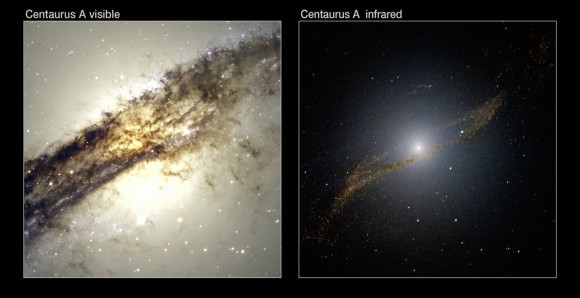
Centaurus A is believe to house a supermassive black hole that has the mass of 200 million Suns at its core, evidenced by the radio emissions streaming out from the galaxy. Previous images of the galaxy from the Spitzer Space Telescope, the ESA’s Infrared Space Observatory and the Hubble Space Telescope revealed some aspects of the structure of the galaxy. The infrared eyes of Spitzer peered partway through the dust to show a warped parallelogram, the cause of which is the gravitational disturbance caused by the merger of Centaurus A with a smaller spiral galaxy.
The presence of rings such as the one seen in Centaurus A is probably not common among other elliptical galaxies, but other such galaxies are known to exist. It’s possible that they are present during only certain periods of an elliptical galaxy’s formation after it merges with another galaxy.
Dr. Kainulainen commented on this possiblity: “One should consider that seeing so bright ring structure is probably quite time-critical. The rings are believed to be induced by “a violent event” of merging galaxies, and they may evolve rather quickly to something that no longer looks like a clear, bright ring. Therefore, they might actually be quite common for merging galaxies, but they “last” only such a short time that we don’t see them in so many galaxies.”
The analysis technique used by the team could be applied to other galaxies to resolve formation structures previously hidden by dust, and provide more information about how violent events alter the formation of elliptical galaxies.
“Potentially, the technique can be applied to any relatively nearby galaxy showing prominent dust features. Such targets could be M31, M83, M51, Fornax A, or any similarly large, bright, dust containing galaxy. Due to geometrical reasons, Centaurus A was a very suitable target for applying the method. It will be more challenging in the case of, for example, normal Spiral galaxies. However, we have already experimented with such galaxies and feel positive about the possibilities they give,” said Dr. Kainulainen.
The striking image of Centaurus A’s ring of star formation was a somewhat surprising result of the imaging that the astronomers took of the galaxy, though there were hints from images taken by other telescopes that stellar formation was present in the obscured, dusty core.
Dr. Kainulainen said, “It was very surprising that the structure contained so much stars and star-forming activity, and that we could reveal it in such great detail. However, it was expected that a structure of this kind exists there, and contains at least some star formation. This was evident, for example, from the earlier Spitzer images. But when I first saw our result, “The Naked Picture of Centaurus A”, on my computer screen, it really was a big WOW-feeling!”
Further observations of Centaurus A are definitely in order to further explore the structure of the stellar ring, and the gravitational dynamics that allowed for its formation.
“Our plans include observations with the Very Large Telescope (European Southern Observatory) and the Hubble Space Telescope. In that work, the information we got about the dust lane in our published Letter will play a significant role. The planned observations aim particularly at determining how long, and in what magnitude, the structure has been forming stars in the past. Such information will help to understand galaxy-merging process, which is not an uncommon event in the Universe.
Dr. Kainulainen and his team published their results in a letter to Astronomy & Astrophysics, published online July 2nd, 2009. The full text of the letter is available here.
Source: ESO, Astronomy and Astrophysics, email interview with Jouni Kainulainen


